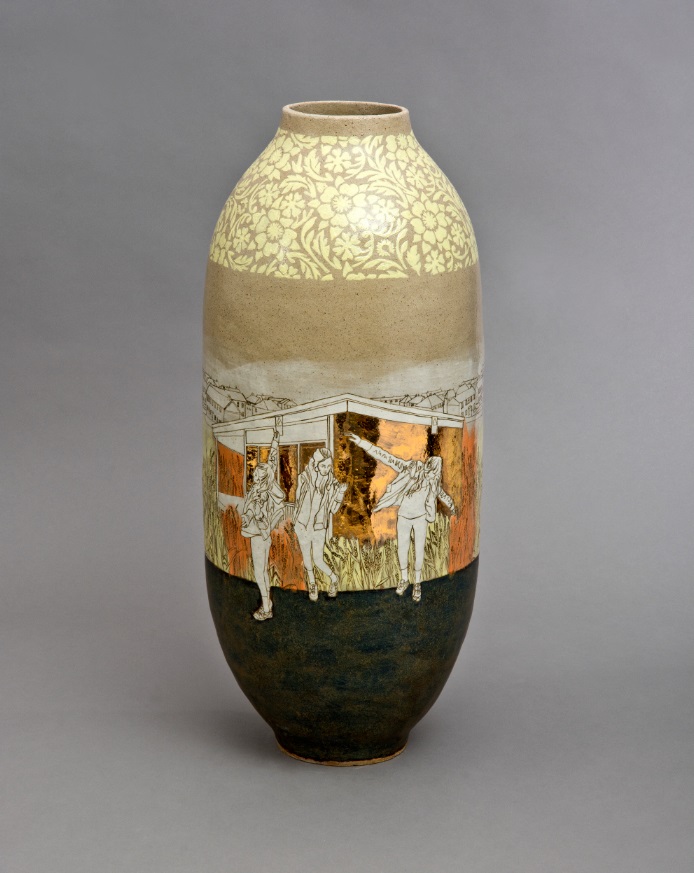


Emilie Taylor, 'Untitled', 2016. 110 x 50 x 50cm. Photo: Jerry Lampson
It is pouring down the day we visit Emilie Taylor in Sheffield, yet upon entering her studio the pots sitting on her workbench immediately make up for any gloom of winter. The traditional English allure of these objects contrasts bravely with very contemporary engraved scenes of women in post-industrial landscapes, typical for British towns.
Taylor’s first wholly commissioned exhibition opens at Gallery Oldham in June, and this new body of work is called Edgelands, referring to “people who are existing in gaps”. The stories on display are multi-layered, addressing subjects such as coming of age, fertility, exploitation, and the hardships of a less privileged environment. But most profoundly they are about women. Being a social worker, Taylor often draws on her experience with local communities for visual inspiration, but for Edgelands it seems she has used observations even closer to herself, from her past and present personal life.
This divide between past and present is in sync with the two different strands of pots she has produced. One references youth, portraying ‘the daughter’; the other suggests early maturity, ‘the mother’. The women are inspired by poetry and classical mythology; by Persephone, a Greek goddess associated with fertility, and Demeter, goddess of the harvest and Persephone’s mother.
This mythological reference, a continuous undercurrent in Taylor’s oeuvre, is not necessarily a visual one, although the subject of fertility is suggested by cornfields and pregnancy. The set with the Persephonic girls echoes the memories Taylor has about her teenage years, when she used to hang out in a Sheffield park with friends, dressed in leggings, vests and trainers. The pots show girls in similar dress, hanging on monkey bars in a playground or walking around with arms spread out, as if they are flying. Each pot displays a scene that does not capture one moment in time, but rather several moments like consecutive slides of a filmstrip melding into one panorama. They suggest motion, progress perhaps. The girls are at the edgelands of childhood, full of dreams and expectations in spite of little prospect for the future.
In the other set of pots, we can discern experiences of Taylor’s present: women in groups, practicing yoga, but also in solitude with bowed head. These subjects seem more grounded, fixed in their yoga poses with an overall sense of stability, reinforced by the grid-like composition of architectural fragments. Taylor has emphasised this disparity – between youth and maturity – by the colour schemes: the ones with the girls appear sun-drenched, executed in lemon and yolk-orange, with planes of gold lustre, while for the others she has used a more sombre palette of greys, black and milky whites. Youthful promise versus tempered hopes?
Emilie Taylor is a ceramic artist and also a social worker with a degree in Art Psychotherapy. Her work with local communities often informs her practice. Taylor uses heritage craft processes, in particular traditional slipware, to explore and interpret post-industrial environments and their inhabitants. She has had residencies in the UK and abroad, and has exhibited at the Yorkshire Sculpture Park, Arts & Crafts House Blackwell, and Chatsworth House, Derbyshire.
Edgelands will be on show at Gallery Oldham 10 June – 9 September 2017. It will then tour the UK, including The Potteries Museum & Art Gallery (23 September – 11 December 2017) and the Craft Study Centre, Farnham.